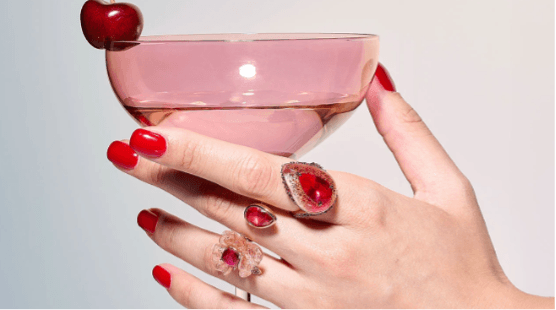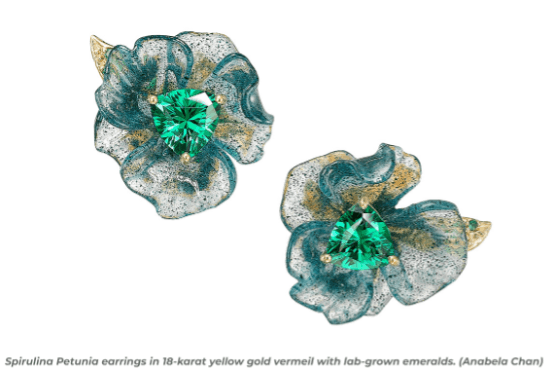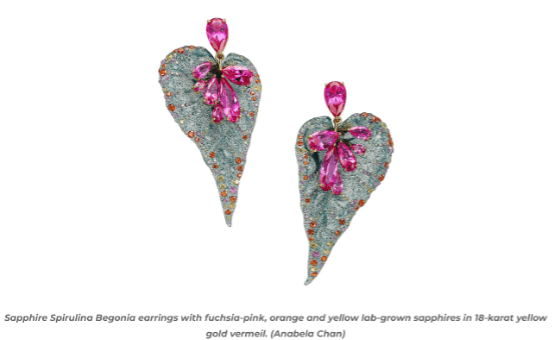Anabela Chan has found a way to turn expired fruit and vegetables into an eco-friendly new jewelry material.

Following three years of research and development, London-based jewelry designer Anabela Chan has created an innovative new material: Fruit Gems. Chan uses actual fruit, vegetables and other organic matter to produce these vibrant stones, taking a cue from the global issue of food waste.
“I was volunteering at the Notting Hill Community Church,” Chan recalls. “I saw how much food was coming through that was considered waste but was perfectly good.”
She started researching the topic and discovered that over a third of the food produced and available in the West goes to waste every year, equating to 9.5 million metric tons annually in the UK and 44 million in the US.
“It got me thinking that some of the most beautiful, vibrant colors come from nature,” she says. “And humans have been extracting pigmentation from nature for thousands of years. So the idea came to me: ‘What if I can turn this food waste into a new genre of gemstones synthesized from fruits and vegetables?’”

Getting to the (beet)root of the matter
Chan started experimenting, reducing fruit and vegetables to their essential pigments, then stabilizing and solidifying them with a bio-resin foundation derived from agave, soybean and avocado seeds.
“This gives us a perfect-clarity stone that has the color and the pure pigmentation from that fruit or vegetable, in a state that can be considered a rough stone,” she explains. “We then cut, facet and polish it in the same way as traditional stones, and we can also cast it into different forms, using the traditional methods of lost-wax casting.”
Her experiments have yielded eight new gemstones of all hues: the rich purple of beetroot, the sunshine-yellow of spinach — not the deep green you’d imagine — and the inky hue of blueberry. There are also stones made from dragon fruit, purple sweet potato, butterfly pea flower, green plankton, and blue spirulina, a freshwater algae.

‘A celebration of science’
Unlike many synthetic stones, the process is also low-energy; initially Chan was reducing the fruit and vegetable waste using just her kitchen stove.
The resulting collection furthers her signature vibrant style, pairing the Fruit Gems with laboratory-grown stones like rubies, emeralds and tourmalines to create statement cocktail rings and earrings.
“It’s a celebration of what science can do,” says the designer.
Going further with the idea of turning waste into jewelry, Chan has also developed her Regenerative-Gemstones line, in which she synthesizes stones such as amethyst, amber and rose quartz from fragments of lapidary off-cuts, binding them with bio-resin. To recreate amber’s natural imperfections and inclusions, she uses autumn leaves and twigs.
“This idea of harnessing our waste and making it precious again is a research theme I’m really interested in,” Chan says. “What excites me is this idea of turning something really quite humble into something magical again by…marrying science and art.”
Main image: A campaign image featuring the Ruby Beetroot Elixir ring (top) with lab-grown ruby, and the Ruby Beetroot Petunia ring with a lab-created ruby and fuchsia-pink sapphire. (Anabela Chan)
